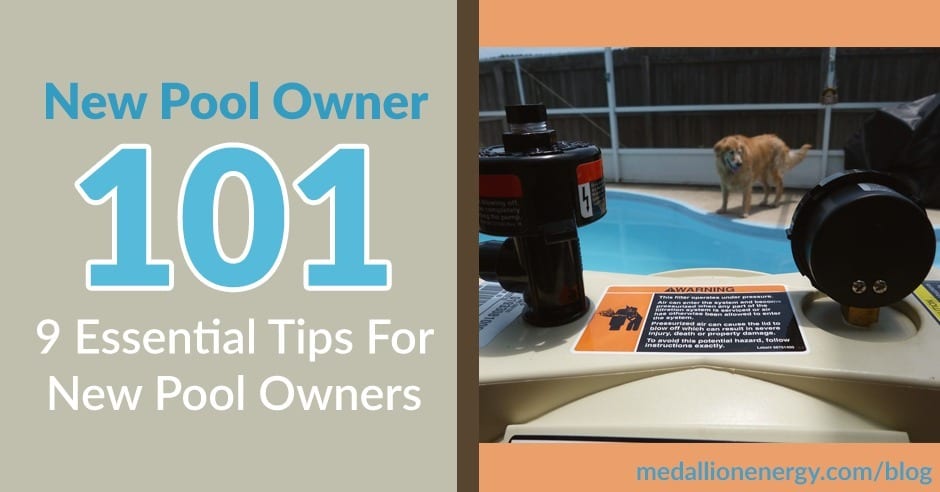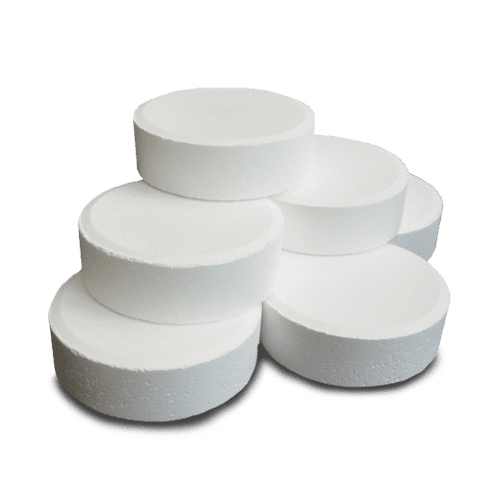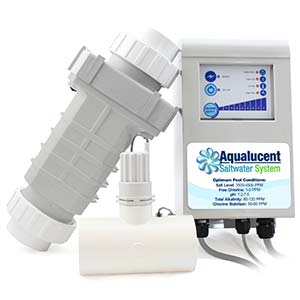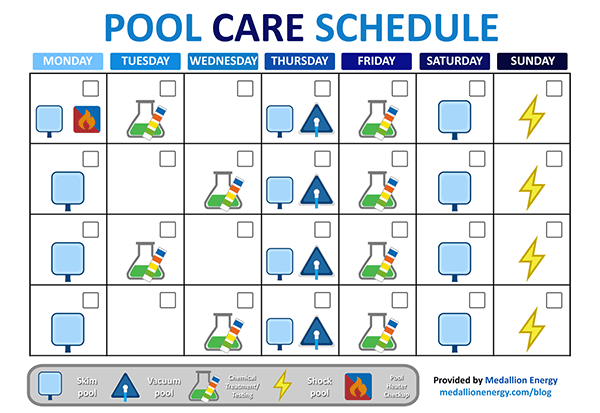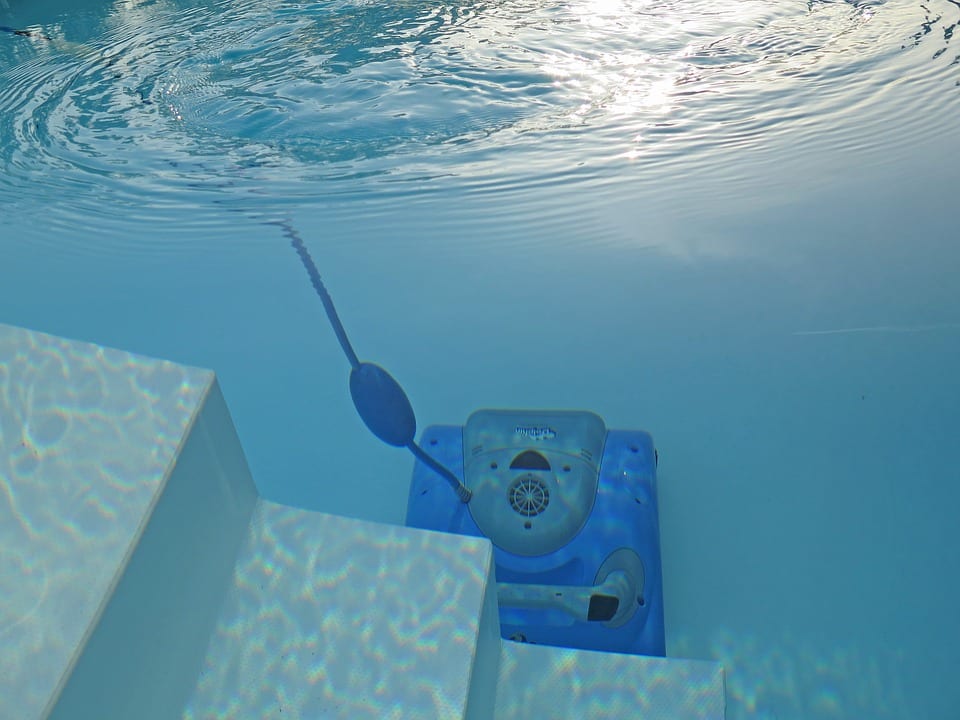Hello, new pool owner (and those soon to be). Welcome to the wonderful world of owning a swimming pool. We know you can’t wait to jump in, swim a few laps, and soak in the sun. But as you know, with all that excitement comes plenty of questions about pool ownership, like:
- How do I keep the pool looking this good?
- What does a new pool owner need?
- How do I start my first pool?
- How do I take care of my swimming pool?
- What’s the best way to heat my pool?
Of course, those might just be some of the questions you have. Pool maintenance and ownership is a pretty big topic, with lots of information spread across the internet. Some of it helpful, and a lot of it not so helpful.
In this post, we make pool maintenance and ownership as simple as possible for new pool owners. We cover every topic from getting to know your pool equipment, to balancing your water, keeping it clean, and everything in between.
So if you want to stop wasting time searching for answers on the internet, then it’s time for you get on the fast lane to becoming a “pool expert”. Keep reading to learn everything you need to know to start, and maintain your swimming pool like a pro.
But before that, here’s a quick list of what a new pool owner needs to get started. It includes both supplies and equipment:
- Pool Care
- Telescopic pole
- Brush attachment
- Skimmer attachment
- Pool vacuum
- Pool water test kit
- Alkalinity increaser (baking soda)
- Alkalinity decreaser (dry acid)
- pH increaser (soda ash)
- pH decreaser (dry acid OR muriatic acid)
- Calcium Hardness increaser (calcium chloride)
- Chlorine (tablets, granular, liquid, or salt water chlorinator)
- Pool Equipment
- Swimming pool pump
- Pool filter
- Filter media (sand, cartridges, etc.)
- Pool heater
If that list feels overwhelming now, don’t worry. We break everything down in the next few lines.
New Pool Owner 101
9 Pro Tips For Pool Owners
1.) Know what type of swimming pool you have
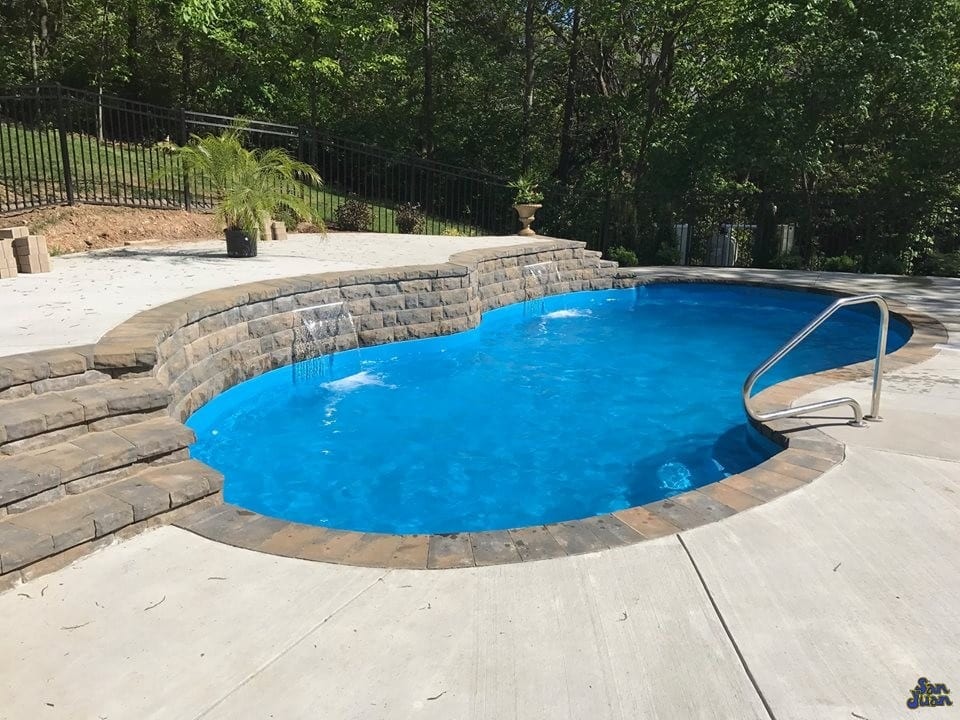


Knowing which type of swimming pool you have is important, because it gives you a clear picture of what to expect when it comes to pool care, maintenance, and repair costs. The three main types of swimming pools include concrete pools, vinyl liner pools, and fiberglass pools.
Each of these pools come with unique features and advantages, as well as a few drawbacks, which are equally important to know. Here’s a quick breakdown of each type of swimming pool:
Fiberglass
Fiberglass pools are known for their durability and low maintenance needs, and are made from a flexible fiberglass shell.
- Last the longest
- Require the least upkeep
- Minimal cleaning required
- COST: $45,000-$85,000
Concrete
Concrete pools offer the most flexibility when it comes to design and spacing needs.
- Increases property value
- Needs the most upkeep & cleaning
- Highest maintenance costs
- COST: $50,000-$100,000
Vinyl
Vinyl pools are lower maintenance than concrete, and cheaper to install
- Lasts long, but needs vinyl replacement every 10 years
- Lower maintenance costs than concrete pools
- Regular cleaning required
- COST: $35,000-$50,000
Related: Fiberglass vs Vinyl vs Concrete Pools: Which Is Best?
2.) Choose the right pool heater for the job
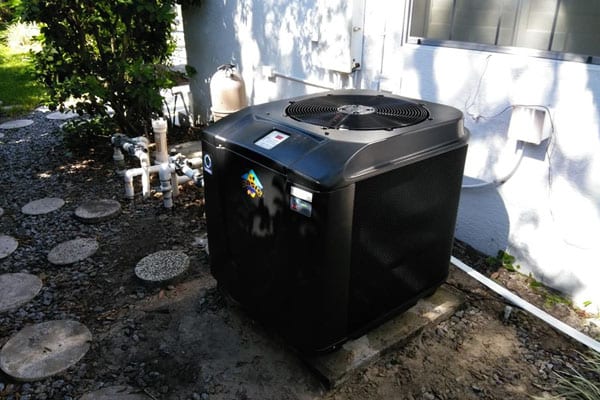


While there a lots of ways to heat your swimming pool, pool heaters are the best choice if you want to swim in warm water on-demand.
The main types of pool heaters include: pool heat pumps, gas pool heaters, and solar pool heaters.
Naturally, each of these heaters work differently, and come with their own unique advantages. So let’s go over them briefly:
Pool Heat Pumps
Pool heat pumps work by drawing in warm air with a fan, and using it to heat up the water that passes through. They’re among the most energy efficient pool heaters on the market.
- Low monthly heating costs
- Works great in any weather down to 40 degrees
- Eco-friendly heating that extends swim season
- COST: $50 – $150 per month
Solar Pool Heater
Solar pool heaters generate heat with help from your pool pump and a solar panel system. While they’re dependent on sunlight and can’t work year round, they’re one of the most affordable pool heating options. They also pair well with other pool heaters, like pool heat pumps.
- Lowest monthly heating costs
- Works well in areas with warm weather and heavy sunshine
- Eco-friendly, but doesn’t work well in cold, rainy, or cloudy weather
- COST: $30 – $90 per month
Gas Pool Heaters
Out of all the pool heaters, gas heaters offer the fastest heating. But that speed comes at a cost, both to your wallet and the environment. These heaters are typically best suited for small pools and spas.
- Highest monthly heating costs
- Fastest heating speed
- Not eco-friendly: produces CO2 emissions
- Cost: $150 – $450 per month
3.) Use variable speed pool pumps for the best energy efficiency
While single speed pool pumps are set to a constant, fixed speed that can’t be changed, variable speed pool pumps offer more freedom.
With variable speed pool pumps, you can manually (or automatically) set the speed of the pump to anything from low to high, and in between. As a pool owner, the ability to adjust the speed of your pool pump is a major plus for a few reasons:
- At a LOW setting, variable speed pumps offer the best energy efficiency per month
- At a HIGH setting, variable speed pumps can quickly clear up a green or cloudy pool
- You can optimize filtration by adjusting the speed based on the amount of swimmers present
So if you want to lower your swimming pool bills, KEEP costs low, and gain control over the speed of your water flow, choose a variable speed pool pump.
4.) Pick the right pool filter for the job – Cartridge, Sand, or DE
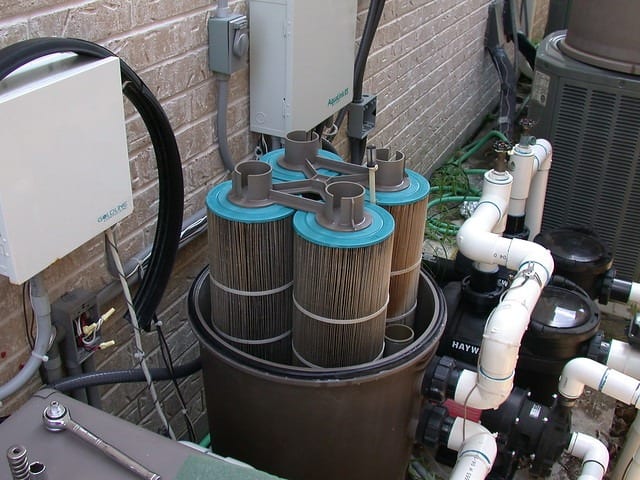


While there are different kinds of pool filters, you can’t really go wrong by choosing one over the other. They all do a good job of filtering your pool water and keeping it clear of impurities.
But naturally, some do it better than others, or come with unique advantages to compensate. Knowing this information can makes it easy to decide which pool filter is right for you.
The three main types of pool filters include cartridge pool filters, sand pool filters, and DE pool filters. Here’s a quick rundown of the differences between them:
Cartridge Pool Filters
- Lowest water usage
- Good filtration, easy to clean
- Shorter filter media lifespan, replacements needed often
Sand Pool Filters
- Low maintenance
- Low-cost filter media (sand)
- Least sensitive level of filtration
DE Pool Filters
- Highest level of filtration
- Long lifespan
- High cost, somewhat high maintenance
To learn more about pool filters, check out: Cartridge vs Sand vs DE Pool Filters: Pool Filter Comparison Guide
5.) Add chlorine to your pool, the right way
Even as new pool owner, you already know that adding chlorine to your pool regularly is a must.
But what you may not know is that there’s a right and wrong way to do it. One way that’ll save you money and maximize the effectiveness of your chlorine. And another, that’ll waste chlorine, your money, and your time. Because there IS such a thing as using too much or or too little.
We’re here to show the right way. For new pool owners, using chlorine tablets is one of the easiest ways to keep your pool sanitized. It’s mostly just a matter of making sure you add the right amount.
With that said, here’s what you need to know about using chlorine tablets:
- For outdoor pools, use stabilized 3-inch chlorine tablets
- Place chlorine tablets inside of your pool’s skimmer basket, not at the bottom of your pool
- This ensures that your pool has a constant supply of chlorine flowing through the system
- Use the correct amount of tablets for your pool, based on it’s size (view full chlorine tablet dosage chart)
- 2,500 – 5,000 gallon pools
- 1 chlorine tablet per week
- 7,000-gallon pool
- 1-2 chlorine tablets per week
- 10,000-gallon pool
- 2 chlorine tablets per week
- 13,500-gallon pool
- 2-3 chlorine tablets per week
- 15,000 – 17,000 gallon pools
- 3 chlorine tablets per week
- 20,000-gallon pool
- 3-4 chlorine tablets per week
- 2,500 – 5,000 gallon pools
Related: How To Use Chlorine Tablets In Your Pool The Right Way
6.) Automate swimming pool chlorination to save time & money
If you really want start your first pool off right, then you can install an automatic chlorination system. This piece of equipment does exactly what it sounds like it does — it automatically adds the perfect amount of chlorine to your swimming pool for you.
One of the best options for automatic pool chlorination is a salt water chlorine generator.
Salt water chlorination systems are known for producing some of the softest, most refreshing pool water. This is because they work by generating chlorine on-the-fly through the use of a special salt cell and pool salt.
By using this process, chlorine generators eliminate the need for additional ingredients, producing a chlorine that’s noticeably gentler, smoother, and less harsh than traditional liquid and granular chlorine.
Plus, they automatically monitor your chlorine levels and add the perfect amount of chlorine to keep your pool balanced. So if you’re looking for an easy way to stretch your “chlorine dollar” and save money in the process, consider salt water chlorine generators.
Related: 7 HUGE Benefits of Using Salt Water Chlorine Generators
7.) Use a pool maintenance schedule to keep your water clean & crystal clear
Here’s the part of being a new pool owner that’s not so fun. Pool maintenance.
We’ll be honest, good pool maintenance, the kind that keeps your pool clean and looking crystal clear, takes a bit of work. But it doesn’t have to be hard, or even complicated. In fact, if you follow just a few pro tips, pool maintenance can be pretty easy.
But before anything, the most important thing to do is to make a pool care schedule. This outlines when and how often you’ll do each pool maintenance task throughout the month. And while it may not seem necessary to keep track of this, you’d be shocked to find how much easier taking care of your pool is when you break it up into easy, bite sized chunks. And that’s exactly what making a pool care schedule is good for.
But don’t worry, your schedule doesn’t have to be complex. It just comes down to doing a few tasks each week. Here’s a quick breakdown of what you need to know. Use this info as a reference, or to make your own pool care schedule:
Monthly Pool Care Schedule
- Brush & skim your pool at least 2x per week
- Vacuum your pool at least 1x per week (after brushing)
- Test and balance pool water chemicals at least 1x per week
- Shock your pool at least 1x per week
- Empty skimmer & pool pump baskets each week
- For the best performance, service your pool heater & pool equipment yearly
Related: How To Make a Pool Care Schedule
8.) Balance your pool water the easy way
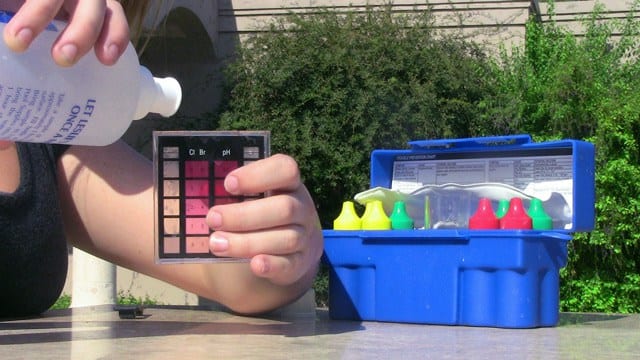


First things first, here’s the chart you’ve been looking for. It tells you which chemicals to adjust, and what you need to increase or decrease their levels.
Before starting, make sure you have a good pool water test kit handy to measure your chemical levels. We recommend products like the Taylor Technologies K-2005 Compete Test Kit.
For the best results, measure and adjust your pool chemicals in the following order:
Pool Chemical Startup List & Pool Chemistry Chart
- 1.) Adjust Total Alkalinity
- Ideal range: 80 – 120 ppm
- To increase Alkalinity: use baking soda or sodium bicarbonate
- To decrease Alkalinity: use dry acid (sodium bisulfate)
- 2.) Adjust pH
- Ideal range: 7.4 – 7.6
- To increase pH: use soda ash (sodium carbonate)
- To decrease pH: use dry acid (sodium bisulfate) or muriatic acid
- 3.) Adjust Calcium Hardness
- Ideal range: 200 – 400 ppm
- To increase Calcium Hardness: use calcium chloride
- To decrease Calcium Hardness: Partially drain pool and replace with fresh water. Use a pool flocculant to collect and vacuum excess chlorine
- 4.) Adjust Chlorine
- Ideal range: 3 ppm (chlorine)
- To increase Chlorine: use either liquid chlorine, granular chlorine, chlorine tablets, or a salt water chlorine system
- To decrease: see this post on chlorine lock
- 5.) Measure Total Dissolved Solids
- Ideal range: Less than 2,000 ppm
- To reduce TDS over 2,000 ppm: dilute water by partially draining pool and replacing with fresh water. Measure and repeat until TDS reads less than 2,000 ppm
- 6.) Check and adjust CYA (cyanuric acid AKA chlorine stabilizer
- Ideal range: 30ppm to 50 ppm
- To increase CYA: add cyanuric acid to your water
- 7.) Shock the pool
- Optional.) Add algaecide monthly
As you go through these steps, remember to test your water to ensure everything is at the right levels.
For a more in-depth guide on balancing pool chemicals, check out: How To Balance Your Swimming Pool Like a Pro
9.) Automate scrubbing & vacuuming with a robotic pool cleaner
Did you know that as a new pool owner, you technically don’t even have to scrub or brush your pool yourself? And no, were not talking about hiring a pool cleaning service.
We’re talking about automatic pool cleaners. Robotic pool cleaners to be specific
These neat machines automatically scrub and vacuum the inside of your pool for you. And as some models are so advanced, that they can map out your pool and change their routes to be more efficient over time.
If you’re a new pool owner who knows they’ll be away too much to keep with pool maintenance, then a robotic pool cleaner serves as a great expensive. In the long run, it’s way cheaper than hiring a pool cleaner, and it pays for itself in the time and effort it saves you.
Related: Automatic Pool Cleaners 101 | Understanding The Differences
Bonus.) Cover your pool to save heat & electricity
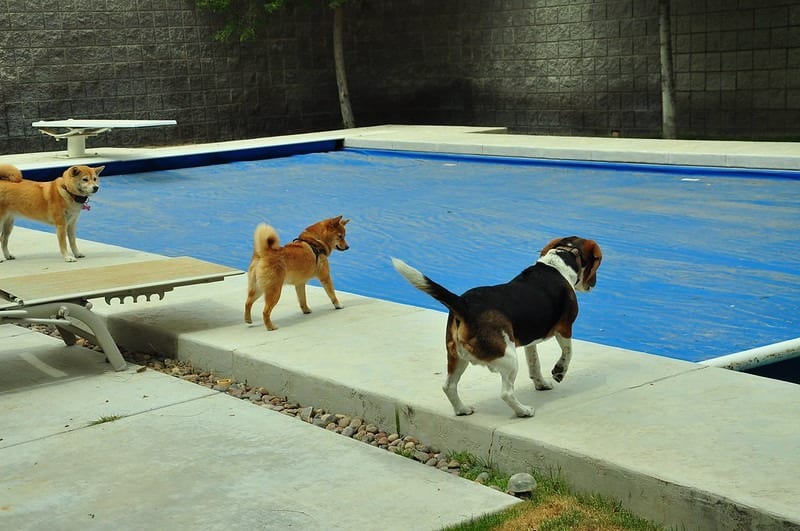


Covering your pool might be one of the most overlooked, yet helpful tips for new pool owners.
Why?
Because covering your swimming pool saves you time and money by:
- Locking in heat and keeping your pool warm
- Serving as a barrier that reduces evaporation
- Keeping out leaves and debris
Covering your pool is a no brainer. It keeps your pool warmer, helps your heater run more efficiently, and saves you money. So if you aren’t doing it now, start.
Related: Quick Guide To Swimming Pool Covers
Wrapping it up
If you made it this far, then congratulations. You now have a well rounded understanding of swimming pool maintenance and what your job as a new pool owner involves.
Although at this point, you should feel like a swimming pool pro. Because by using the tips you just learned, you can make pool maintenance 10x easier, and keep your swimming pool looking crystal clear year round. It’s all up to you!
To get more money saving tips, pool care hacks, and exclusive content sent straight to your inbox, subscribe to our swimming pool blog.
If you liked this post, you might also like:

